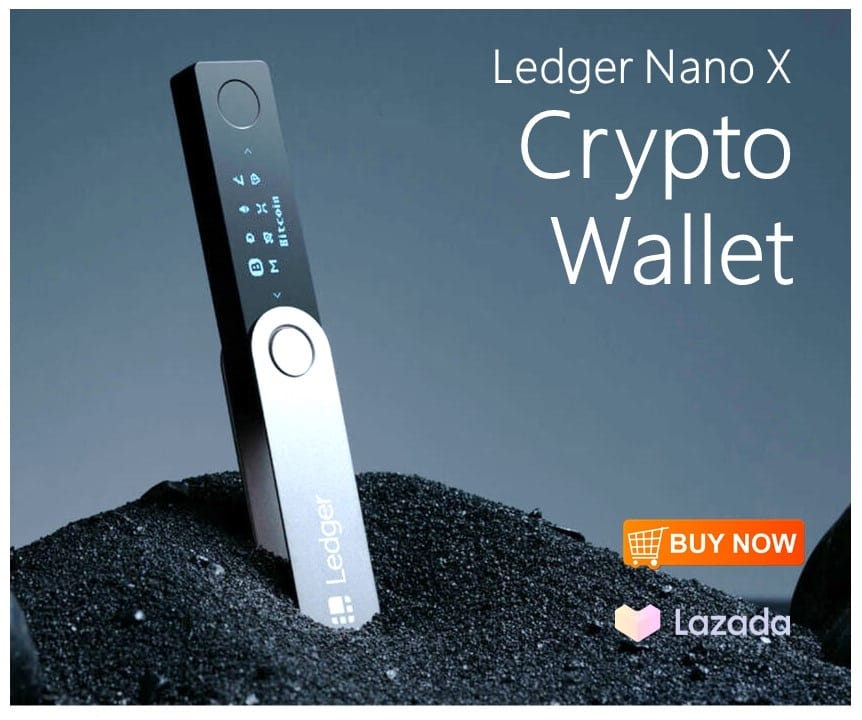There is no question that the future of blockchain technology is looking very bright. In fact, many experts believe that smart contracts on Ethereum will be the defining technology of the next decade. And, if that’s the case, you need to be prepared – and that starts with understanding how they work. In this article, we will be walking you through the basic steps of building a smart contract on Ethereum – complete with examples and case studies. So, whether you’re a beginner or an experienced developer, you’ll be well on your way to understanding this powerful technology.
What is Ethereum?
Ethereum is a decentralized finance platform that runs smart contracts: applications that run exactly as programmed without any possibility of fraud or third-party interference. Ethereum is a continuation of the original Ethereum blockchain – the first blockchain designed to allow anyone to write and execute smart contracts.
What is a Smart Contract on Ethereum?
A Smart Contract is a computer code that facilitates, secures, and executes the terms of a contract used by FinTech companies and crypto traders. When someone initiates a transaction on the Ethereum network, they are transacting with smart contracts. These contracts are written in Solidity, an Ethereum programming language.
Smart contracts allow for trustless transactions between parties. They also have the ability to automate complex contractual interactions and enforce strict conditions on when payments should be made. This makes them ideal for use in applications such as insurance, property rental, and crowdfunding.
A smart contract is simply a digital contract that is executed and enforced by blockchain technology.
How To Build A Smart Contract On Ethereum in 5 Easy Steps
Ethereum is a decentralized platform that runs smart contracts: applications that run exactly as programmed without any possibility of fraud or third-party interference. Ethereum enables developers to build and deploy decentralized applications. A smart contract is a contract code that runs on the blockchain and can be used to facilitate the exchange of money, content, property, shares, or anything of value. To create a smart contract on Ethereum, you will need a blockchain client like Mist or Geth and an Ethereum wallet. Once you have these tools assembled, follow these five easy steps:
1) Choose a project to deploy your smart contract onto.
If you’re looking to deploy a smart contract on the Ethereum blockchain, there are a few different projects you can choose from. You can either use an existing project as a basis for your own or build your own from scratch.
One popular option is the Augur platform, which offers a wide range of features, including market predictions and betting. If you want to build something similar yourself, the Solidity programming language is a good choice because it’s relatively easy to learn and use.
Alternatively, if you just want a test network and find out how smart contracts work before using them in larger projects, there are plenty of options available too. The Ethereum Virtual Machine (EVM) allows developers to test their contracts without actually deploying them onto the blockchain.
2) Write your contract code in Solidity – the official language for Ethereum contracts.
Solidity is the official programming language for Ethereum contracts. It is a compiled, general-purpose programming language that runs on the Ethereum blockchain. Solidity code is written in curly braces, and it uses keywords to denote functions and variables.
To create a smart contract on Ethereum:
- You first need to create a new account on the Ethereum network.
- After signing up for an account, you can visit the Solidity website to download the software.
- Once you have downloaded and installed the software, open it and select File -> New Project.
- Next, enter your project name (e.g., My First Smart Contract Using Pragma Solidity) and click Create.
- You will now be prompted to enter your contract code into a text editor. You can use any text editor that supports syntax highlighting for Solidity.
- Once your code is ready, click Save to save it to your project folder.
- Finally, click Compile to compile your code and generate an executable file (.sol).
- This file can be transferred to any computer that has access to the Ethereum network and executed as a smart contract.
3) Compile your contract code using the Ethminer software – this will allow you to test your contracts before deployment.
Once your contract code is compiled, you will need to deploy it to the Ethereum blockchain. There are several ways to do this, but the most common way is to use the Mist Ethereum client. Once your contract is deployed, you can start testing it by issuing commands to it. You can also use the Truffle framework to test contracts written in other languages.
4) Deploy your contract onto the Ethereum network using the Truffle tool – this will allow you to interact with and manage your contacts from within a single interface.
Truffle is a development environment for Solidity smart contracts, which can be used to deploy and interact with contracts on the Ethereum network. Once your smart contract is deployed, you can access it using the Truffle interface, which will give you access to all of the management features offered by Ethereum.
5) Monitor the performance of your contract and make changes as necessary!
There are a few different ways to monitor the performance of your contract and make changes as necessary. One way is to use a contract monitoring service. These services will send you notifications whenever something happens to your contract, such as when it is executed or when its state changes. Another way to monitor your contracts is to use the Truffle Framework’s built-in debugger. This will allow you to step through the code of your contract, making it easy to see what is happening.

What is a Case for Smart Contract on Ethereum?
Ethereum has a number of advantages over other blockchains when it comes to smart contracts. These advantages include:
Ethereum supports multiple programming languages, meaning developers can easily create and deploy contracts.
Ethereum also has a robust infrastructure for supporting smart contracts, including support for decentralized storage and verification of contract execution.
Finally, Ethereum provides a platform for building decentralized applications (dApps), which can be used to build anything from simple financial services to more complex applications that interact with external systems.
There are many reasons to use smart contracts – some of which are listed below.
Automation
Smart contracts can automate many tasks, making them an attractive option for tasks such as contract negotiation or dispute resolution. They can also be used to manage assets or to automate payments. Automation can reduce the need for human involvement in these processes, leading to increased efficiency and cost savings.
Transparency
Transparency is one of the key benefits of using a smart contract on Ethereum. In a traditional transaction, both the buyer and seller are typically privy to all the information needed to make an informed decision about whether or not to complete the transaction. This is not always the case with smart contracts, however.
A smart contract on Ethereum is essentially a set of rules that are enforced by computer code. Anyone who wants to participate in a transaction must agree to abide by these rules, which means that they cannot tamper with them or falsify information. This lack of transparency can be a significant deterrent for potential buyers, as it makes it difficult to know exactly what they’re getting into.
However, many experts believe that this lack of transparency is ultimately outweighed by other advantages of using a smart contract platform like Ethereum. For instance, contracts can be easily updated and modified if necessary, which makes them extremely flexible and adaptable. This ability to evolve quickly makes them particularly well-suited for use in complex commercial transactions or other high-value transactions where stability and accuracy are critical.
Efficiency
Efficiency is one of the main reasons to use a smart contract on Ethereum. With a smart contract, all the code that needs to be executed is stored in a single location, which makes it easier to audit and verify. Additionally, the Ethereum network can process more transactions than traditional networks, meaning that a smart contract can execute faster.
Security
One reason to use a smart contract on Ethereum is security. Smart contracts are immutable, which means that once they are created, they cannot be changed or undone. This makes them immune to fraud and corruption and ensures that all transactions carried out through a smart contract are irreversible. Additionally, because Ethereum is a decentralized platform, no one party can control or tamper with the contract. This makes it an ideal platform for implementing contracts governed by Rules of Behavior (ROBOs), which allow devices to autonomously interact with each other without human intervention.
Trust
One of the reasons to use a smart contract on Ethereum is trust. A smart contract can be verified by anyone, and because it is code, it can be trusted to do what it says it will do.

How Does a Smart Contract Work on Ethereum?
A smart contract is a computer protocol that facilitates, secures, and records the negotiation or performance of a contract address. A digital asset, also known as a token that uses a smart contract platform to facilitate, secure and/or record the negotiation or performance of a contract, is referred to as a Smart Contract Token. Ethereum is a decentralized platform that runs smart contracts: applications that run exactly as programmed without any possibility of fraud or third-party interference. When you send Ether to another person, you are essentially executing a transaction on their behalf and implementing the terms of their agreement using blockchain technology.
To create and use a smart contract on Ethereum, you will first need to create an Ethereum wallet. You can do this by visiting www.ethereum.org and clicking on “Create New Wallet.” This will take you to the website where you can enter your personal information (like your address) and create your metamask wallet. After you have created your wallet, it is important to add some Ether (ETH) so that you can conduct transactions on the Ethereum network. To do this, visit www.ethplorer.com and click on “Add Ether” under
To put it simply, a smart contract is a set of instructions that are stored on the blockchain and executed when certain conditions are met.
Writing an Ethereum Smart Contract
When it comes to writing an Ethereum Smart Contract, there are a few things that you will need to take into account. First and foremost is that Ethereum Smart Contracts are essentially self-executing code. This means that when a set of conditions are met, the contract will automatically execute the appropriate actions.
Another thing to keep in mind is that Ethereum Smart Contracts are written in Solidity, a language designed specifically for this purpose. However, since Solidity is relatively new, there may be some aspects of it that you don’t understand yet. If this is the case, you can always seek help from someone who is more experienced with this type of programming.
Overall, writing an Ethereum Smart Contract can be somewhat complex. Still, it’s definitely worth it if you want to take advantage of all the potential that this technology has to offer.
To write a smart contract, you first need to understand the basics of Ethereum. Then, you will need to create a contract file – which is a specialized format used by Ethereum smart contracts.
Deploying the Smart Contract
Ethereum is a blockchain-based platform that allows users to create and deploy smart contracts. A smart contract is a computer code that automatically executes when specific conditions are met. Smart contracts can be used to facilitate the exchange of money, property, shares, or anything of value.
To deploy a smart contract on Ethereum, you will first need a digital wallet account. You can then install the Ethereum client on your computer and follow the instructions provided to create a new account, and install the Ethereum client.
Once you have installed the Ethereum client, open it and click on “Contracts.”
In the Contracts tab, you will see all of your current contracts and any new contracts that you have created in the past. You can also click on “Browse” to find an address or function name and then enter it into the field below.
To create a new contract, click on “New Contract” in the Contracts tab and fill out all of the necessary information. To deploy your contract, click on “Deploy.”
The Ethereum client will generate a random hexadecimal address for your contract and display it in the Deployed Contract field. You can now copy this address and use it to interact with smart contracts.
Once you have written and tested your contract, you will need to deploy it to the Ethereum blockchain. This process can be carried out using a variety of methods, but we recommend using a smart contract deployment platform.
What are the Decentralized Applications in Ethereum?
Decentralized applications (DApps) on the Ethereum blockchain are applications that run without a centralized authority or company. DApps run on the Ethereum Virtual Machine, an open-source software platform designed to allow developers to create and deploy decentralized applications. As of July 2018, there were over 1,500 DApps on the Ethereum network.
How to Test an Ethereum Smart Contract?
Testing a smart contract on Ethereum is important for ensuring that the contract functions as intended. There are a few ways to test a smart contract, but one of the most common is to use a testing platform like Truffle. This platform allows developers to simulate interactions with the blockchain and can help identify any issues with the contract before they become a reality on the network.

Programming Language Used to Develop a Smart Contract
Ethereum is a blockchain-based platform that enables smart contract functionality. Ethereum utilizes a programming language called Solidity which developers can use to create and deploy smart contracts.
What Kind of Platform Executes Smart Contracts?
Ethereum is a platform that executes smart contracts. Smart contracts are computer protocols that facilitate, verify, or enforce the negotiation or performance of a contract. Ethereum provides a decentralized platform for applications that run exactly as programmed without any possibility of fraud or third-party interference.
A Tutorial on How You Can Deploy Your Smart Contract
Ethereum is a blockchain platform that enables developers to build and deploy smart contracts. A smart contract is a digital contract that can be programmed to self-execute when certain conditions are met. Ethereum provides a Turing-complete virtual machine, which makes it possible to create arbitrarily complex smart contracts.
To create a smart contract on Ethereum, you will first need to install the Ethereum platform software. Next, you will need to create an account on the Ethereum network and generate a wallet. You will also need to purchase Ether (ETH), with which you will pay for transactions on the network. Finally, you will need to write your smart contract code and deploy it on the Ethereum network.

Conclusion: How To Build A Smart Contract On Ethereum: 5 Easy Steps
Ethereum is a blockchain platform that enables developers to build and deploy decentralized applications. Ethereum provides a Turing-complete virtual machine, which can be used to create smart contracts. A smart contract is a contract that can be programmed to execute the terms of an agreement once it is verified by the blockchain network. There are several steps that need to be taken in order to build a smart contract on Ethereum.
The first step to create a smart contract on Ethereum is that the client needs to be installed on a computer. Next, the Ethereum blockchain needs to be initialized and downloaded. The next step is to create an account on the Ethereum network and start mining Ether. Finally, contracts can be created and deployed using the Truffle development framework. All of these steps are easy to follow and can be completed in just a few minutes!
In this article, we have covered the basics of smart contracts – and give you some tips on how to write and deploy them. So, whether you are a beginner or an experienced developer, you will be well on your way to understanding this powerful technology.






